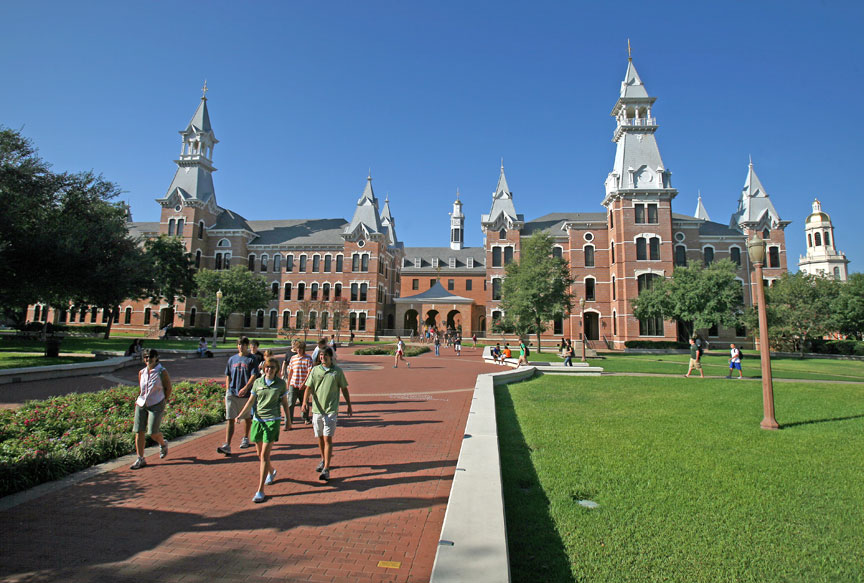
For decades, institutional transformation has been a centerpiece of visioning exercises for strategic planning. Caught in the vise of rising costs and decreasing enrollment, leaders of theological schools and church-related colleges and universities have been trying to update their programs and purposes and tighten (or broaden) their mission statements, while at the same time staying true to founding principles. Almost all have also tried to gain a competitive advantage over less nimble competitors.
For the last quarter-century, leaders at Baylor University have undertaken a series of strategic plans and adaptations inspired by the need for institutional transformation. Baylor’s mission has been updated to restate its core Christian commitments and identity while officials have worked mightily to make Baylor into a top-notch research university. But neither institutional heft nor broad constituency guaranteed success, even when the governing board was committed to the realignment of the university’s mission and culture. Two presidents in succession left under fire.
And yet, today Baylor is a different place. Under a new president and well into its second ambitious 10-year plan, the university has its largest-ever freshman class, a new football stadium, and even a celebrity alumnus, Heisman Trophy winner Robert Griffin III. The university is not just engaging in a three-way balancing act — with academic achievement, athletic prowess, and Christian mission in a kind of dynamic tension — but it seems to be moving ahead on all three fronts.
How has all this been achieved? Baylor’s efforts at transformation can serve as a reminder that resources and planning are not enough to bring about change, but that driven and disciplined leaders are needed too. Two generations of reformers at Baylor have kept the long view in mind to transform a comfortable Baptist liberal arts college into a respected research university.
While many institutions have downplayed church connections, theological distinctives, and old-fashioned moral imperatives in order to draw students and top faculty, Baylor’s efforts to explore and advance both Baptist and broader evangelical Christian commitments offers a bracing example of how a university can strengthen faith commitments in the setting of higher education.
Over the last 25 years, the transformation at Baylor has been anchored by two sequential ten-year strategic plans, dubbed “Baylor 2012” and “Pro Futuris.” The keystone of both plans has been a focus on faculty — finding, developing, and re-warding those who embody the university’s vision. The current plan, “Pro Futuris,” articulates this especially clearly, calling for faculty and staff who “embrace” their Christian identity and who live lives of “manifest integrity, moral strength, generosity of spirit, and humility in their roles as ambassadors of Christ.”
Smooth governance moves
Two crises were brewing at Baylor in the late 1980s — one boiling over and the other simmering. First, the ascendancy of the “conservative” wing of the Southern Baptist Convention posed an immediate threat to Baylor’s own leadership, who were in the “moderate” camp that was rapidly being sidelined in church-wide committees, boards, and leadership roles. (The names for the groups are contested. The “moderate” camp is sometimes called “liberal” or “moderate conservative,” while the other group is sometimes called “inerrantist” or “fundamentalist.” At the time, their differences were generally over biblical interpretation and women in church leadership.)
 |
| Herbert Reynolds |
Second, internally, many of Baylor’s leaders, including President Herbert Reynolds, felt that the university’s religious identity had become diluted.
Before the 1980s, governance in Southern Baptist higher education had been divided into two categories of institutions: On the one hand, seminaries were affiliated with, and their boards appointed by, the national Southern Baptist Convention. On the other hand, colleges and universities were affiliated not with the national body but with state conventions like the Baptist General Convention of Texas.
By the 1990s, in a dramatic shift, the more conservative wing of the Southern Baptist Convention had taken control of the governing boards of all the denomination’s seminaries, as well as all other national agencies. But some of the state conventions remained in control of “moderates” — including the Virginia and Texas conventions. After the 1990 national meeting of Southern Baptists, Reynolds feared that the next focus for conservatives would be the state conventions, and that Baylor’s independence might be threatened if conservatives came to dominate the Texas state convention.
President Reynolds had already prepared to protect Baylor from external control if the conservative camp won control of the Texas convention. With the board chair’s approval, he had engaged attorneys to study Texas nonprofit law, and the lawyers had assured him that the university’s board of trustees had the sole authority to change its charter. So with the support of board leaders, Reynolds moved swiftly, and in September 1990 the board of trustees voted to amend the charter and become a largely self-perpetuating board of regents. This action was carefully planned and coordinated, and revised articles of incorporation were recorded with the Texas secretary of state on the very day that the board voted to change the charter.
The revised charter retained Baylor’s official relationship with the Baptist General Convention of Texas and stipulated that the president and all members of the board of regents would be Baptists. The university would continue to be operated according to the “the aims and ideals of Baptists, which included the Baptist Faith and Message Statement of 1963” — a statement of faith that was later amended in 1998 and 2000 by conservatives. Bylaws were revised, providing for the Texas convention to elect a quarter of the board.
The next year, the Baptist General Convention of Texas voted to affirm the university’s charter and also the charter for a brand-new seminary to be created at Baylor, with its own board of trustees reporting to the university board of regents. The new seminary would serve as an alternative to those controlled by the national church body. Thinking ahead, Reynolds and the board had already reserved a name with state educational officials. “George W. Truett Theological Seminary” firmly tied the new seminary to Texas Baptist history — Truett was the pastor of the First Baptist Church of Dallas from 1897 to 1944.
A political takeover had been averted, and the new seminary opened its doors in 1994.
A Christian institutional identity
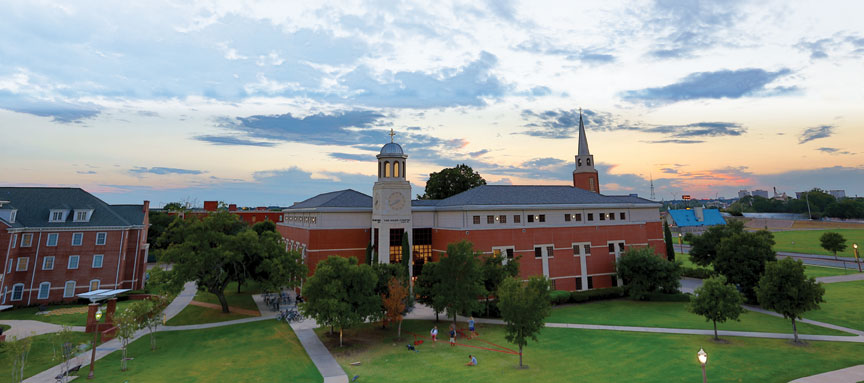 Changing the charter had suddenly opened a new opportunity for Baylor. Without a tight ecclesial connection, it was no longer self-evident what made Baylor a Baptist (or even a more broadly evangelical or “Christian”) university. Was it enough to provide an extracurricular Christian environment with chapel services and pastoral care? During the last five years of his presidency, Reynolds tried to make the definition of Baylor’s Christian identity a matter of serious internal conversation, and provost Donald Schmeltekopf led rounds of faculty discussions on this topic for four years.
Changing the charter had suddenly opened a new opportunity for Baylor. Without a tight ecclesial connection, it was no longer self-evident what made Baylor a Baptist (or even a more broadly evangelical or “Christian”) university. Was it enough to provide an extracurricular Christian environment with chapel services and pastoral care? During the last five years of his presidency, Reynolds tried to make the definition of Baylor’s Christian identity a matter of serious internal conversation, and provost Donald Schmeltekopf led rounds of faculty discussions on this topic for four years.
Reynolds and Schmeltekopf were not thinking in a vacuum. In the early 1990s, a movement was growing to strengthen Christian identity in church-related colleges. Foundations sponsored conferences, magazines published articles, and books like George M. Marsden’s The Secularization of the Academy fed the conversation to reclaim religious identity. Seeing signs of religious drift all around, Baylor’s leaders shared in the spirit of this movement, and they determined that recruiting and cultivating the right faculty members was essential if Baylor was to reverse its own trends toward secularization.
In 1995, Reynolds retired and Robert Sloan, the founding dean of Truett Seminary, was elected university president. Like Reynolds and Schmeltekopf, Sloan was determined to guide Baylor into a deeper and more certain Baptist and Christian identity. But Sloan wanted to take it a step further and make that identity a matter of university policy.
President Sloan and Provost Schmeltekopf began guiding Baylor into a strategic planning process, and after wide internal and external consultation, they presented a plan to the board of trustees. “Baylor 2012,” endorsed by the board of regents in 2001, included 10 elements, including some very ambitious goals: reducing the faculty-student ratio, upgrading athletic facilities, and re-emphasizing the student residential experience. But the plan’s crux was “more research and more faith.”
The plan focused in particular on hiring faculty and staff, which disrupted the university’s academic, religious, and governance patterns. Before Sloan’s presidency, the faith commitments of faculty candidates had been taken for granted, but under the new procedures, candidates were expected to describe their faith during the interview process, demonstrate Christian intellectual commitments, and maintain active church membership.
Sloan and Schmeltekopf also felt that to build a renowned faculty, expectations had to be adjusted to give new faculty members more time for research. Instead of the standard teaching load of four courses per term, new hires were assigned half that amount — or, for those in the sciences, even a single course per term. Student admission standards were increased as well — and, in a move deeply opposed on campus, Sloan pressed the board to raise tuition by 30 percent to service a growing debt load for new facilities.
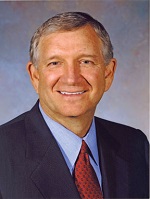 |
| Robert Sloan |
Not everyone was pleased with the new direction. Some veteran faculty members, with heavier teaching loads and lower salaries, resented new hires who were paid more for teaching less. Some feared that explicit testimonials of Christian commitment breached the walls of conscience. No older faculty members lost jobs, but some lost leadership roles.
During these transitional years, Baylor was regularly in the news, with attention from Christianity Today, Christian Century, National Review, and First Things. Supporters lauded the vision of a truly Baptist and Protestant research university. Detractors, both inside and outside the university, feared conservative religious oppression undermining both religious and academic freedom.
In the midst of controversy stood President Sloan, wielding three cell phones, as he directed and monitored progress on the “Baylor 2012” plan.
He participated in faculty hiring and, as he recalls, vetoed only 10 search committee recommendations out of dozens when he felt that the standards for faith commitment or academic excellence had not been met. Many faculty felt that he was violating their prerogatives — even those who reflected the new values. Both Sloan’s supporters and his detractors came to view him as “very interventionist,” as provost emeritus Donald Schmeltekopf said in a recent telephone interview. But Sloan rode his presidential authority hard, and the imperatives of “Baylor 2012” continued to gain traction.
In 2005, after a decade of leadership, the last five filled with controversy, President Sloan resigned under pressure from both board and faculty. The faculty had taken a series of no-confidence votes — the final one in fall 2004, with 60 percent of faculty participating. Eighty-five percent voted against him. And the board grew weary of the continuing controversy.
The same faculty senate that recommended a no-confidence vote also acknowledged Sloan’s remark-able accomplishments in achieving the “Baylor 2012” goals. And Sloan himself was graceful in his departure. “The vision is more important than one person,” he said. “No one is indispensable. Changing situations often require new leaders with different gifts and the benefit of a clean slate.”
The board appointed him chancellor. The following year, Sloan accepted the presidency of Houston Baptist University, where he hoped to “apply the lessons learned at Baylor to a new project.” 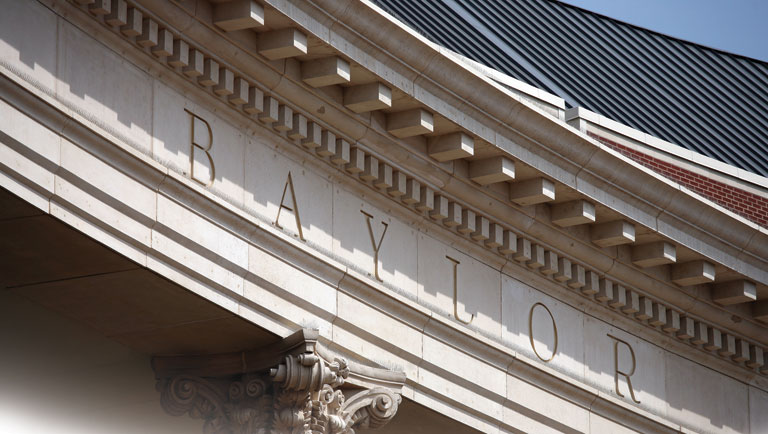
A false start
After Sloan left Baylor, the university had three leaders in five years, including two interims and the two-year presidency of John Lilley, a Baylor alumnus who had been recruited from the top job at the University of Nevada at Reno.
In a short time, Lilley angered faculty leaders by vetoing more than 10 tenure recommendations, all for academic reasons. Yet he himself did not share the academic credibility of Sloan, who had earned degrees at Baylor, Princeton, and the University of Basel. Furthermore, Lilley alienated even more of the home constituency by trying to change the traditional Baylor logo on the football team’s helmets — an apparently trivial modification, but something of a last straw that, for many, symbolized high-handedness. The board of regents never said much publicly about its reasons for firing him, but opposition to Lilley served as one source of unity on a divided campus. Having rejected an offer from the board to complete his term in another capacity, Lilley returned to Nevada and retired.
When David Garland took over as interim president in 2008, he immediately began to calm the waters. With years of experience as an interim pas-tor in local Baptist churches, Garland was a good listener, and as dean of Truett Seminary, he knew the university’s history and had demonstrated his administrative skills. Moreover, some of the tensions on campus were resolving with time — especially as faculty members hired under the old rules continued to retire while those hired with the new expectations became a critical mass.
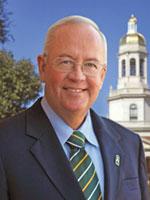 |
| Kenneth Starr |
A surprising choice
Garland’s two years as interim head gave Baylor’s board a chance for a thorough presidential search, and in 2010, they brought on Kenneth Starr (left), a native Texan who was dean of the law school at Pepperdine University. Called “Judge Starr” by everyone, he had gained fame and notoriety during the Bill Clinton administration as a special prosecutor and author of the “Starr Report,” which thoroughly chronicled the president’s misdeeds.
Some observers, like former Texas Gov. Mark White, a Baylor alumnus, had misgivings about Starr’s appointment. Yet the board seems to have been looking not for a lightning rod but someone who could provide strategic direction, achieve the goals of the “Baylor 2012” strategic plan, and increase fundraising. Starr was expected to do all these, and he offered something that most academics could not: recognition on the national and international stage. Doors opened for him — especially in Texas, where his report of presidential crimes was a distinct plus with donors — and he immediately helped the university raise $100 million in endowed scholarships.
A year into Starr’s service, the board made a significant change to the university bylaws despite opposition from the state Baptist convention. The revision permitted a quarter of the board of regents to be Christians who were not Baptist. This was a significant change for an institution that had identified so strongly with its denominational heritage. (The non-Baptists continued to be excluded from voting on certain measures, such as further changes to the rules regarding the religious makeup of the board, and they were not allowed to vote on theological issues at Truett Seminary.)
At the time of this change in bylaws, about 35 percent of the student body self-identified as Baptist, while Catholics made up 14 percent and Methodists just 3 percent. A few dozen students identified them-selves as Hindus, Muslims, and Buddhists, but the rest of the student body identified with a panoply of other Protestant churches. The board sought to mitigate any pushback on the bylaw changes by establishing a new center for Baptist research and by instituting new scholarships for the children of Baptist ministers and missionaries.
Even with the change in the religious makeup of the board, Starr succeeded in calming troubled waters where his predecessors had previously stirred controversy. To be sure, not all the goals of the “Baylor 2012” plan were achieved — the endowment has not yet reached $2 billion, for example — but when the board adopted a new strategic plan in 2012, there was no organized opposition. The new plan, “Pro Futuris,” was essentially an extension of the earlier one, replete with aspirational statements on “transformational education,” “compelling scholarship,” “informed engagement,” and “committed constituents.” In 2013, the board responded to Starr’s early effectiveness by naming him chancellor as well as president.
 Faculty fears that Starr would be a heavy-handed executive proved unfounded, and in January 2014 the faculty senate issued a commendation of Starr’s “service and leadership as Baylor’s president, especially his spirit of cooperation and shared governance.” He had won over the faculty through early endorsements of both academic freedom and the faculty’s critical role in governance. The chair of the senate told Inside Higher Ed that Starr “clearly values debate” and that “lively debate doesn’t put him off or change his character” — high praise indeed. The chair added, “Even when it is necessary to be critical, I have always detected a positive, redemptive note in what he has to say.”
Faculty fears that Starr would be a heavy-handed executive proved unfounded, and in January 2014 the faculty senate issued a commendation of Starr’s “service and leadership as Baylor’s president, especially his spirit of cooperation and shared governance.” He had won over the faculty through early endorsements of both academic freedom and the faculty’s critical role in governance. The chair of the senate told Inside Higher Ed that Starr “clearly values debate” and that “lively debate doesn’t put him off or change his character” — high praise indeed. The chair added, “Even when it is necessary to be critical, I have always detected a positive, redemptive note in what he has to say.”
What Baylor can teach about transformation
Baylor’s experience demonstrates that a transformative vision requires close tending and adjustment to meet success amid changing internal and external circumstances. Reshaping an institutional culture is never easy — especially building on strengths at an institution that’s already doing quite well. Indeed, it can seem almost impossible to move a college with a strong regional and denominational reputation toward something bigger, such as a nationally and even internationally recognized university.
But this is what Baylor has been trying to do, and it is worth reflecting on how its leaders have been achieving their goals.
Vision. President Herbert Reynolds shared elements of a vision with the board and faculty at Baylor — one that inspired his successors to deepen the institution’s Christian commitments as the lens through which to expand academic leadership and build residential and academic programs. This proved a winning mix for enrollment, faculty recruitment, and fundraising.
Leaders. The vision was shared and implemented by a host of key figures, including successive presidents, cabinet members, deans, department heads, board officers, major donors, and even people in the media. These leaders have been devoted to the new vision, clear about their goals, and dogged in the face of obstacles.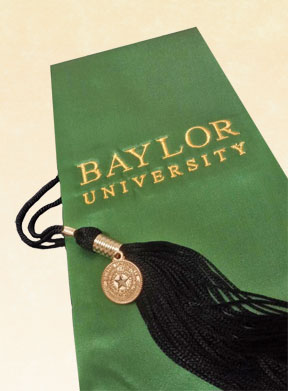
Time. At Baylor, the transformation has taken more than two decades and is not yet finished — a vision never is. Ongoing discipline and vigilance remain essential, and new standard-bearers and supporters must always be cultivated.
President Sloan was right: A vision is more important than one person. Ken Starr’s recent successes should rightly be seen as the leading edge of a long trajectory of change. At Baylor, this hasn’t been without pain, but the results are both impressive and promising. Transformation at an institution of any size is both costly and rewarding.
Baylor University facts
Founded: 1845
Location: Waco, Texas
Degree-granting units: 12 schools and colleges. 141 undergraduate degree programs, 75 master’s programs, 37 doctoral programs.
Student body: 13,859 undergraduates, 2,404 graduate students.
Budget: $547 million, not counting the Baylor College of Medicine, which was spun off from the
university in 1969.
Endowment: $1.2 billion, including permanently restricted, temporarily restricted, and unrestricted funds.
“Baylor 2012” imperatives>
The goal of the “Baylor 2012” strategic plan was to place Baylor in a “unique leadership position in higher education” by making it a “Baptist research university without peer.”
The plan included 12 “imperatives,” a few predictable (“Establish an environment where learning can flourish”), but most of which were ambitious:
- Develop a world-class faculty.
- Initiate new academic programs.
- Construct useful and beautiful physical spaces.
- Build a “winning athletic tradition in all sports.”
- Achieve a $2 billion endowment.
All of these required raising and borrowing substantial sums.